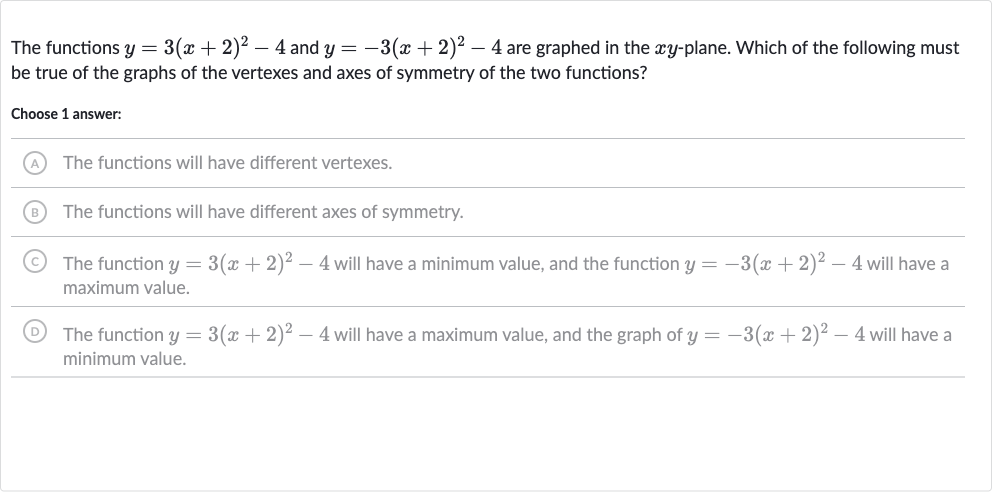AI tutor
Welcome to Bytelearn!
Let’s check out your problem:

The functions and are graphed in the -plane. Which of the following must be true of the graphs of the vertexes and axes of symmetry of the two functions?Choose answer:(A) The functions will have different vertexes.(B) The functions will have different axes of symmetry.(C) The function will have a minimum value, and the function will have a maximum value.(D) The function will have a maximum value, and the graph of will have a minimum value.
Full solution
Q. The functions and are graphed in the -plane. Which of the following must be true of the graphs of the vertexes and axes of symmetry of the two functions?Choose answer:(A) The functions will have different vertexes.(B) The functions will have different axes of symmetry.(C) The function will have a minimum value, and the function will have a maximum value.(D) The function will have a maximum value, and the graph of will have a minimum value.
- Identify Form: Identify the form of the given functions.Both functions are in the form of a transformed quadratic function , where is the vertex of the parabola and is the axis of symmetry.
- Determine Vertex: Determine the vertex of each function.For , the vertex is .For , the vertex is also .Since both functions have the same and values in their vertex form, they share the same vertex.
- Axis of Symmetry: Determine the axis of symmetry for each function.The axis of symmetry for both functions is , as it is derived from the value in the vertex .
- Parabola Direction: Determine the direction of the parabolas.The coefficient of the squared term determines the direction of the parabola. If is positive, the parabola opens upwards. If is negative, the parabola opens downwards.For , is positive, so the parabola opens upwards and has a minimum value.For , is negative, so the parabola opens downwards and has a maximum value.
